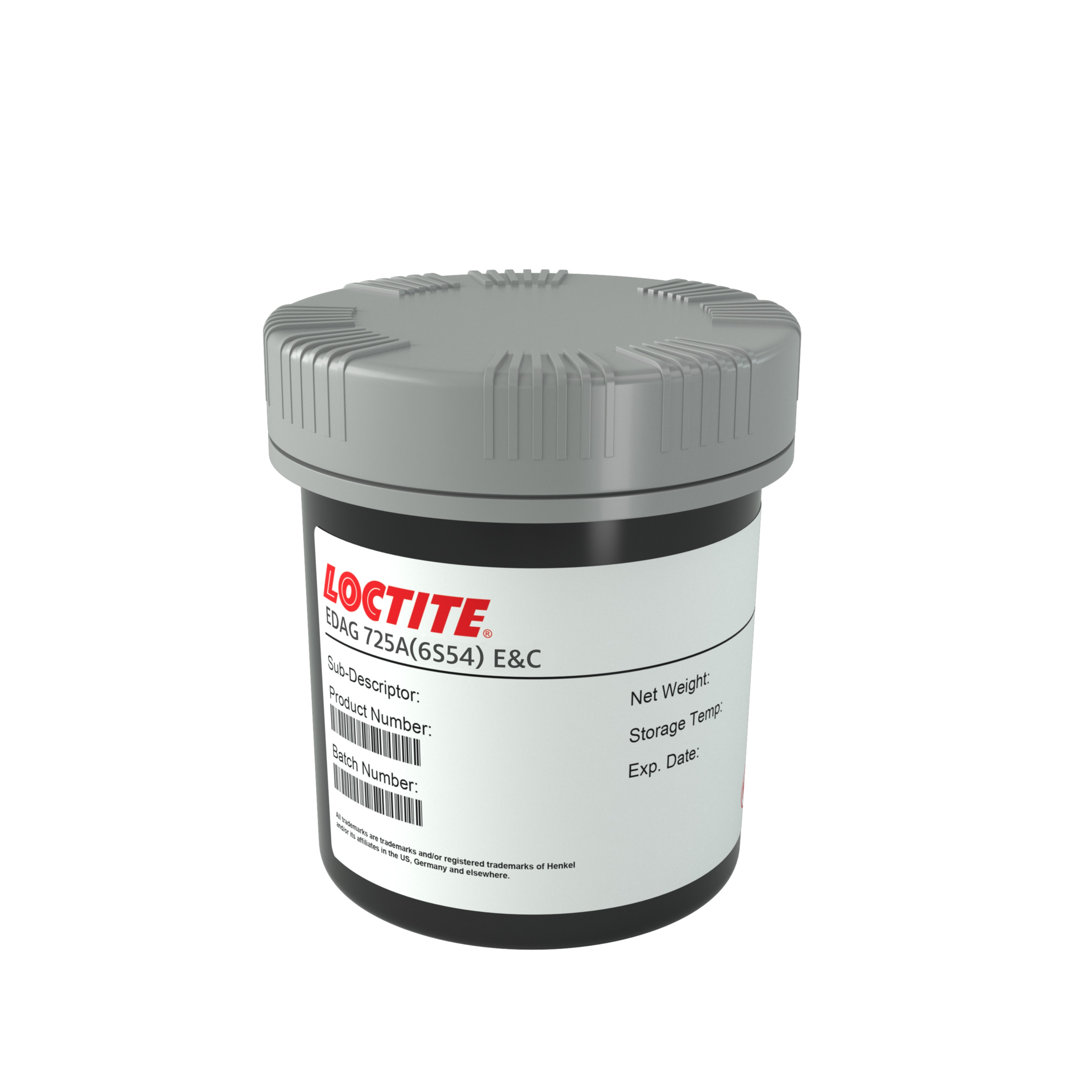LOCTITE EDAG 725A(6S54) E&C
- Print Conductive circuits
- No thinning required
- Excellent adhesion
Product Description
LOCTITE EDAG 725A(6S54) E&C electrically conductive ink is designed for use in the production of low voltage circuitry on polyester films. It has optimum conductivity that can be used in high capacity crossovers and is ideal to print the conductive part of flexible circuits.
LOCTITE EDAG 725A(6S54) is a heat curable conductive thermoplastic with low electrical resistance that requires no thinning. It exhibits excellent adhesion and flexibility while also offering good printability, screen residence time and shelf life.
LOCTITE EDAG 725A(6S54) is typically used for Membrane keyboards, membrane touch switches and flexible circuits while also being able to operate at a temperature of 100°C
Drying Cycle
- 15 minutes @ 120°C
Technical Specifications
| General Properties | |
| Density (g) | 2,14 g/cm3 |
| Physical Properties | |
| Viscosity Viscosity Viscosity is a measurement of a fluid’s resistance to flow. Viscosity is commonly measured in centiPoise (cP). One cP is defined as the viscosity of water and all other viscosities are derived from this base. MPa is another common unit with a 1:1 conversion to cP. A product like honey would have a much higher viscosity -around 10,000 cPs- compared to water. As a result, honey would flow much slower out of a tipped glass than water would. The viscosity of a material can be decreased with an increase in temperature in order to better suit an application | 12,500 mPa.s |
Additional Information
Optimal Storage : 4 to 8 °C
TYPICAL SCREEN PRINTING PROCESS
Emulsion Thickness
-Solvent resistant emulsion , μm 10 to 40
Recommended Squeegee
-Shore Hardness 70 to 80
Recommended Screen Type
-Monofilament polyester screen, threads/cm 64 to 80
-Stainless steel screen , threads/cm 68 to 130
Printing Equipment Type
-Manual
-Semi-automatic
-High speed reel-to-reel



